State Historical and Cultural Park “Ancient Merv”
By Stephen Lioy
What is State Historical and Cultural Park “Ancient Merv”?
The Ancient Merv historical site in Turkmenistan is the location of what was, in the 12th-13th centuries, possibly the largest city in the world. The site stretches across 350 hectares (865 acres) with an even larger buffer zone. It includes five historic walled cities as well as numerous rebuilt religious monuments that remain pilgrimage and worship sites into the present day.
This oldest and best-preserved Silk Road oasis city has been a site of human habitation for more than 4,000 years. While some major monuments have been largely rebuilt during the Soviet and post-Soviet periods, much of the site has been left in its natural state of decaying mud walls and tumbledown palace buildings. Nevertheless, they remain well-preserved by the dry Turkmen desert climate.
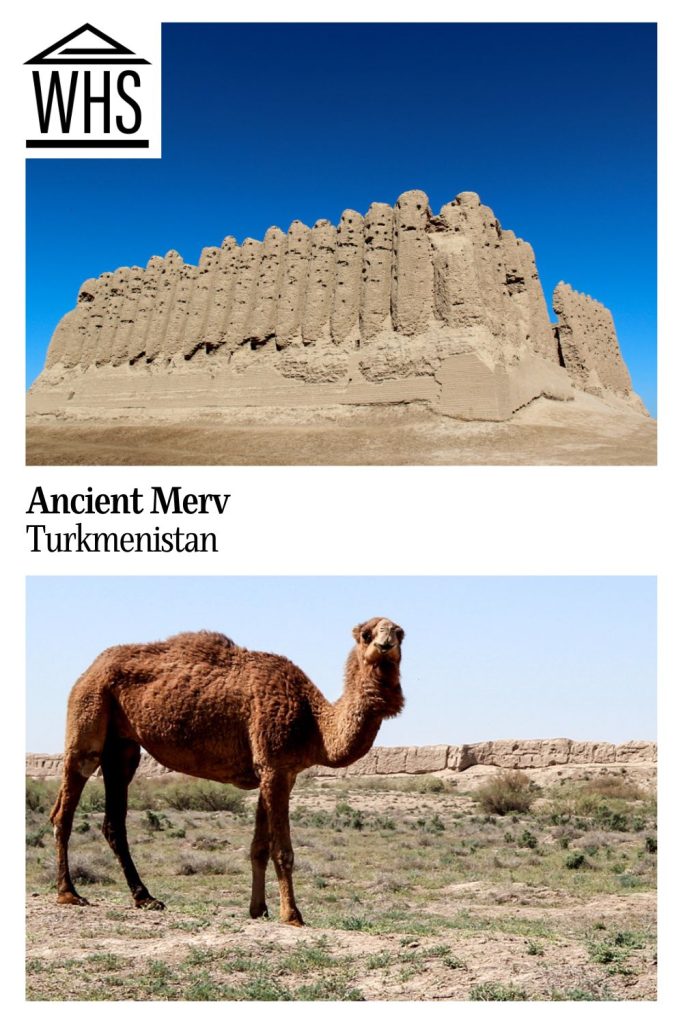
Disclosure: This article contains affiliate links. Making a purchase through an affiliate link will mean a small commission for this website. This will not affect your price. Privacy policy.
Known at its height in the Seljuk period as “Mary – Queen of the World”, the city was a global center of art, science, and education. Founded initially as an Iranian fortress, the site was subsumed into the Parthian and later Islamic empires as populations slowly moved westwards to follow the changing course of the Murghab river that flows nearby.
Because each site was abandoned as new sites were built further west, the abandoned sites were left as they were. As such, Merv presents an unusual case where the remnants of successive civilizations stand alongside each other in somewhat distinct settlements rather than one atop the next. This allows visitors to take a walk through more than four millennia of history in an afternoon.
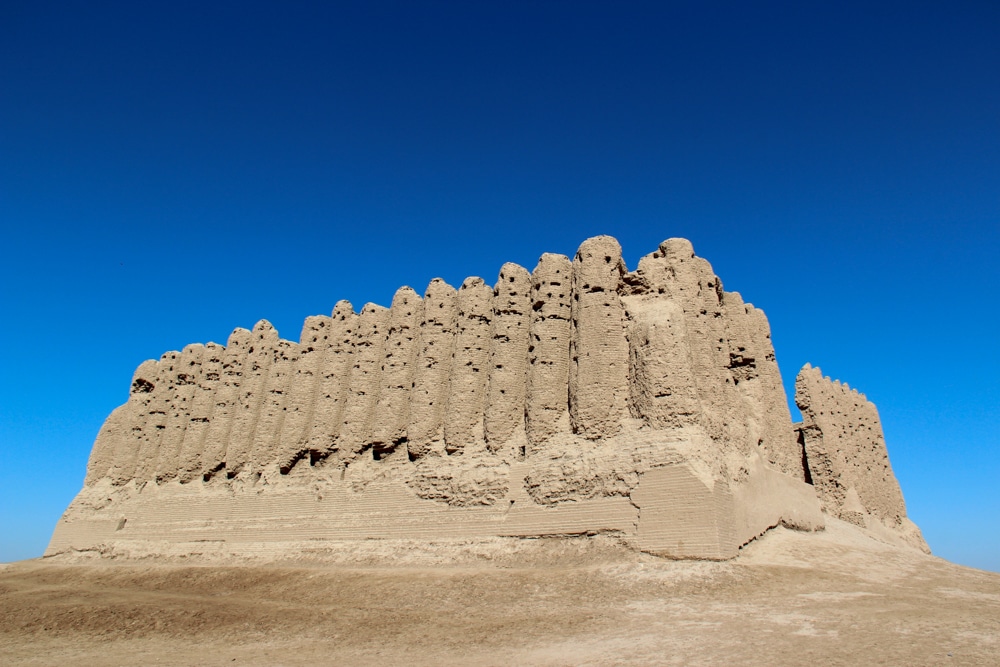
Why is Ancient Merv a UNESCO World Heritage site?
The cities that grew here influenced the cultures of Central Asia and Persia for 4,000 years, according to UNESCO. The Seljuk city “in particular influenced architecture and architectural decoration and scientific and cultural development.” Because of how the site saw a sequence of cities, “their urban lay-outs bear exceptional testimony to the civilizations of Central Asia over several millennia.” The fortifications – the walls built around each city in each historical period – are a “remarkable continuous record of the evolution of military architecture from the 5th century BC to the 15th-16th centuries AD.”
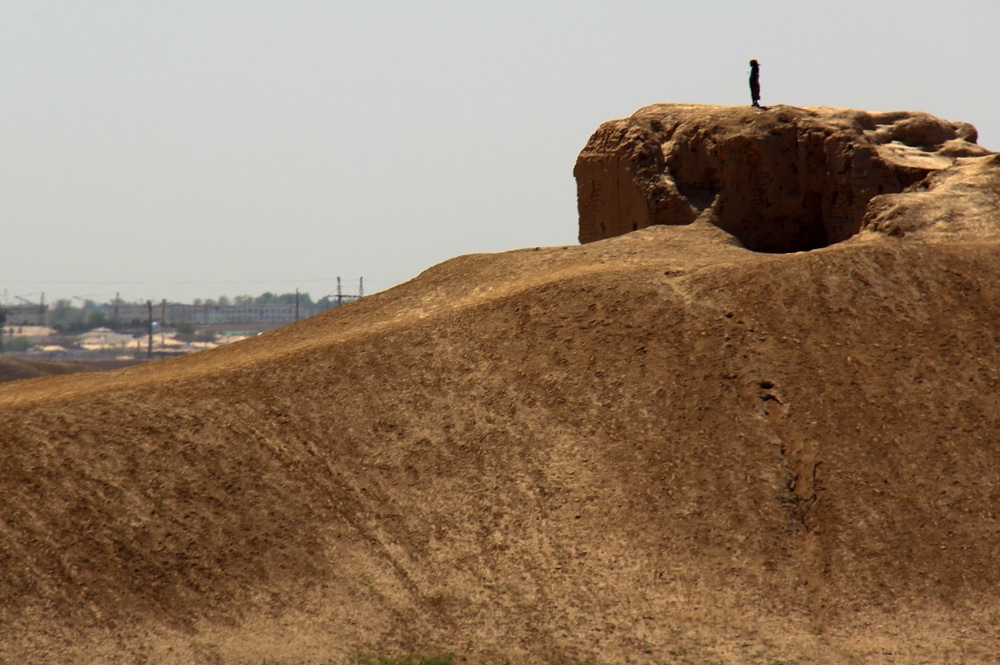
What can you expect on a visit to Ancient Merv Cultural Park?
Merv is a wonderful blend of ancient history and modern culture. While most foreign tourists focus largely on the archaeological sites across the territory, make time to visit the more modern restorations of religious monuments as well. The tomb of Sultan Sanjar and Mausoleum of Yusuf Hamadani in particular are very popular destinations for Turkmen pilgrims, who travel from all corners of the country to visit. They make excellent places to interact with Turkmens in an informal setting – something I struggled with at times in what remains a very restrictive country.
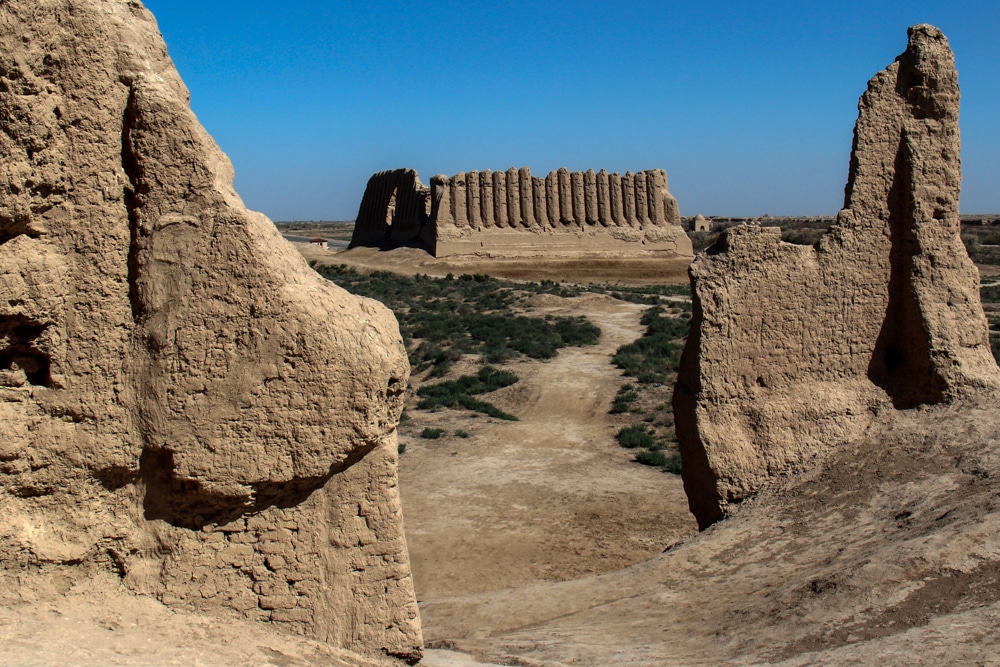
Is Ancient Merv worth visiting?
Merv will delight archaeology fans. Nothing is off-limits and excavations are ongoing (if slowly). One can wander through thousands of years of history that stretches across global cultures and religions. I spent a half-day and could have easily enjoyed it for longer. More casual visitors can probably enjoy the site in a handful of hours, visiting the centers of each of the five historical periods and some of the newer renovated monuments before heading back to the town of Mary. Those with a stronger interest in history will easily spend a full day.
If the Silk Road is a particular interest of yours, there are many other related UNESCO sites: Kunya-Urgench is also in Turkmenistan, as are some elements of the Zarafshan-Karakum Corridor, which also has elements in Tajikistan and Uzbekistan. See also the Archaeogical Site of Ani and the City of Safranbolu in Türkiye, and Itchan Kala in Uzbekistan.
Tips for visiting Merv
The entire State Historical and Cultural Park “Ancient Merv” site is open to the sun and elements. In the Turkmen summer, it’s brutal. Even in the cooler months, prepare by bringing sun protection and drinking water to last the day. There are no concessions on site, so it’s best to take snacks for extended visits. That way you’ll avoid the need to double back into the center of Bayramly.
Most tourists will visit with a private guide and driver, as Turkmenistan does not issue tourist visas to independent travelers. Even given this, expect to walk quite a lot while exploring the site. It’s not quite like hiking in Nokhur, but it’s still a long day. Wear shoes that have good grip for scrambling up mud slopes and are comfortable for extensive walking throughout the site.
If you want to take a short trip into Turkmenistan from Uzbekistan, consider this four-day tour, this five-day tour, or this seven-day tour. All of them include Ancient Merv. Or if you want to focus on Silk Road sights across the region, take this 10-night, 11-day tour in Uzbekistan, Kazakhstan, Turkmenistan (including Merv) and Kyrgyzstan.
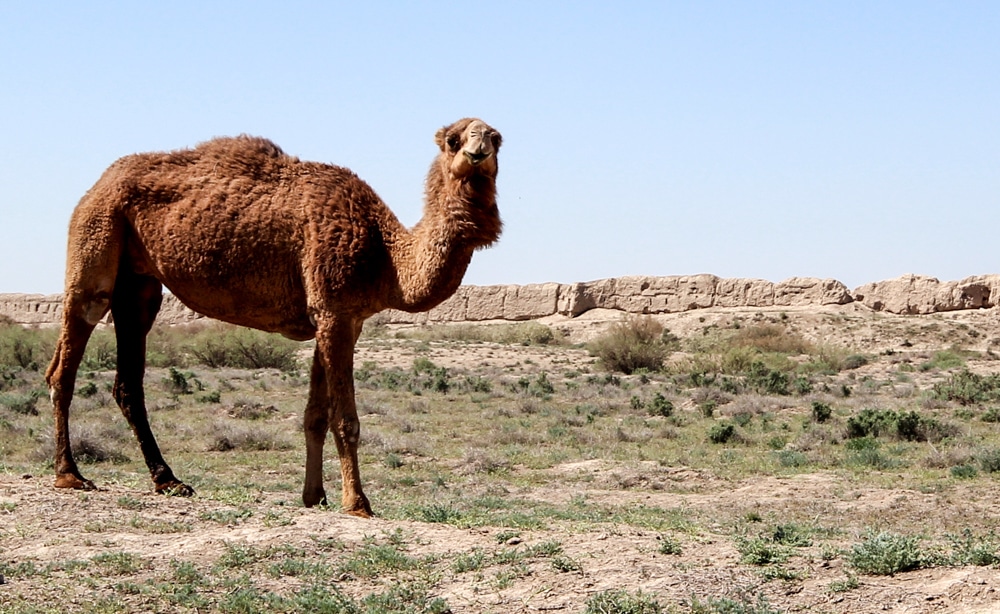
Where is State Historical and Cultural Park “Ancient Merv”?
Merv is on the edge of the village of Bayramly, about half an hour by car east of the major city of Mary. Public transit does connect the two, but all tourists must be accompanied by a guide. The vast majority will be with a private driver, who can drive and park freely within the sprawling Ancient Merv site.
Have you been to Ancient Merv? If so, do you have any additional information or advice about this UNESCO World Heritage site? Please add your comments below!

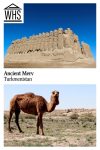
Great info about Ancient Merv! Does the park offer guided tours to help visitors understand the different cities and their history better? Would be cool to know how easy it is to explore on your own too.
It sounds like the guide you’re with – since they don’t issue visas for independent travelers – should be able to serve as a guide at the site.